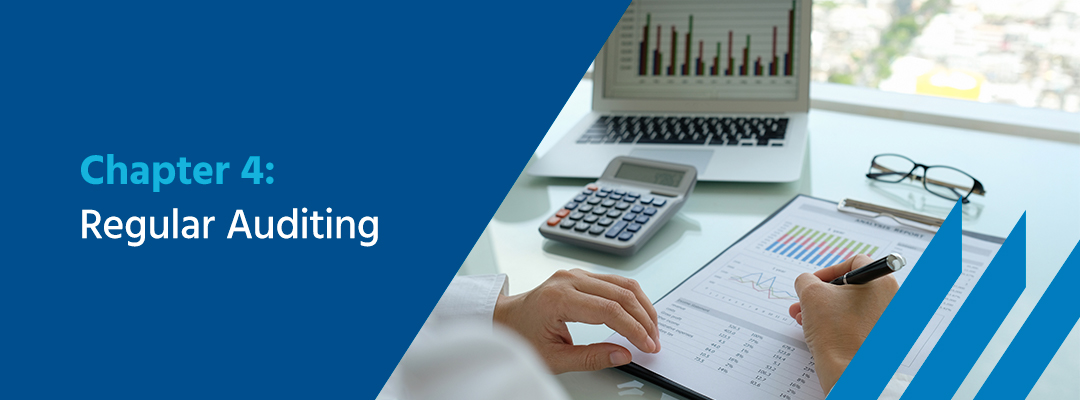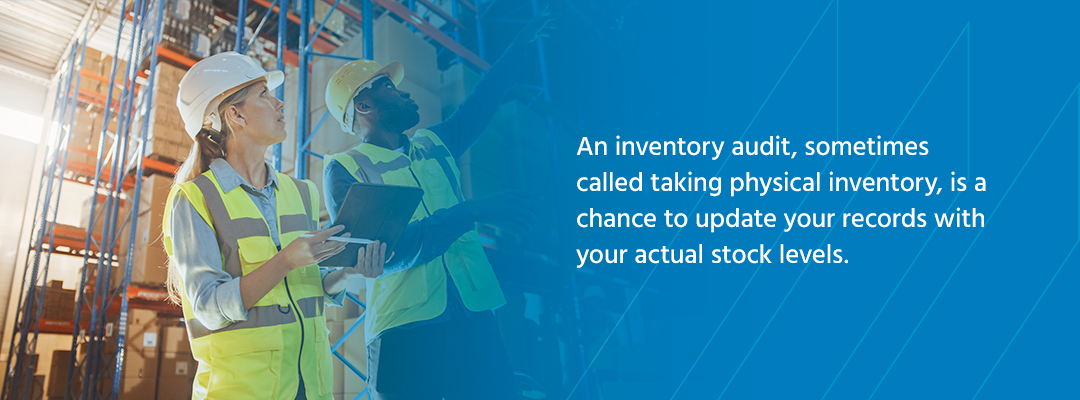Chapter 4: Regular Auditing
Table of Contents
-
Inventory Management Techniques in Operations Management
- Chapter 2: Relationship Management
- Chapter 3: Contingency Planning
- Chapter 4: Regular Auditing
- Chapter 5: Prioritizing With ABC Inventory Analysis
- Chapter 6: Accurate Forecasting
- Chapter 7: Average Cost Inventory Accounting
- Chapter 8: The Just-in-Time (JIT) Method
- Chapter 9: Backordering
- Chapter 10: The Economic Order Quantity (EOQ) Method
- Chapter 11: The Fast, Slow and Non-Moving (FSN) Method

In retail and warehouse settings, inventory accuracy is often relatively low. Improving inventory accuracy can help increase sales. Because keeping accurate inventory records is so challenging and critical to success, frequent inventory audits are essential.
What Is an Inventory Audit and Why Is it Important?
An inventory audit is a way to check that your inventory records line up with what is physically in the warehouse or stockroom. Sometimes, your records can misalign because of a typo or human error in logging inventory. Your inventory can also experience shrinkage through:
- Theft: This is common in consumer electronics.
- Expiration: This is common in the food and beverage industry.
- Product damage: This can happen with almost any type of inventory.
Inventory accuracy typically decreases after a physical count. An inventory audit, sometimes called taking physical inventory, is a chance to update your records with your actual stock levels. It also lets you follow up on discrepancies and may even help you track down missing inventory. Regularly auditing your stock can also give you ideas for inventory management that can improve your business efficiency.

How Do You Run an Inventory Audit?
A warehouse inventory audit can involve many procedures, depending on the goals of the audit. They might include:
- Conducting physical inventory and cycle counting: Running an inventory audit can involve counting physical inventory and cycle counting with a scanner.
- Spot checking: Spot check throughout the year if you find that you tend to run into issues when you perform a full physical inventory at year-end. Spot checking means selecting a product, counting it and comparing the number to what it should be. Focus on spot checking fast-moving or problematic products.
- Verifying inventory in transit: When transferring stock between locations, you should be able to verify that the inventory is in transit.
- Analyzing inventory costs: During an audit, you can analyze your inventory costs, including order costs, shortage costs and holding costs.
- Investigating missing stock: Can’t account for every item delivered in a shipment? Despite your best efforts, items can still go missing or get stolen. An inventory audit can help you identify missing stock and the cause of the problem.
- Examining inventory for damage and sellability: An audit can help you identify inefficiencies, such as damage or lack of sellability.
- Matching invoicing records to shipping documentation: During an audit, you can verify that invoices for your products match the number of items and costs of the items shipped from your warehouse.
Using Finale Inventory for Inventory Auditing
Finale Inventory has many features that make stock auditing easier. First, our integrated barcoding solution speeds up physical inventory counts. Your warehouse workers can scan inventory with a barcode reader and check the real counts against the software’s expected counts as they go. Our barcode software has a stock take and cycle counting setting that logs audited stock quantities in your software right from the app.
We also have an inventory audit feature that lets you see a history of stock changes and the employees responsible. When you notice any concerns, you can track down the last employee to log a stock change in the system and verify records. Having the ability to track inventory in real time lessens your dependency on physical inventory counting. Because the system uses your sales and purchasing records to update your stock records, you do not have to physically count your inventory to determine your current stock levels.
You can rely on your software to keep your inventory data accurate and up to date and combine it with an occasional audit to account for shrinkage. Sign up for a free trial of Finale Inventory or schedule a demo with a product expert today.




